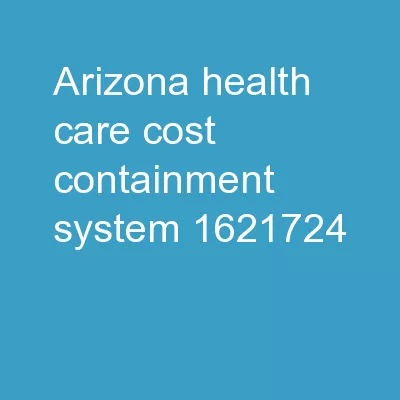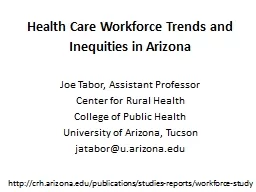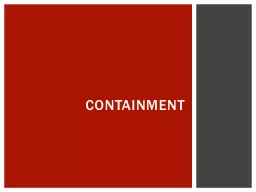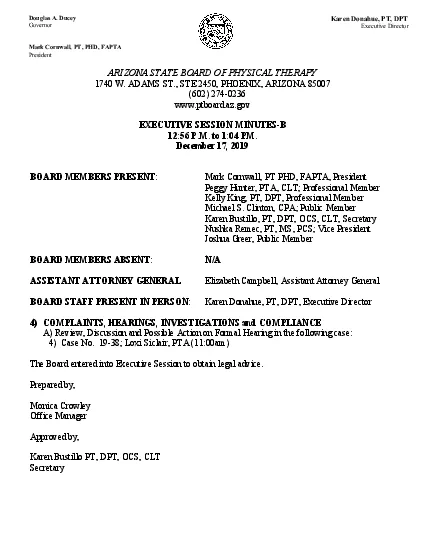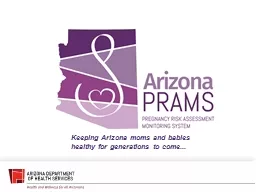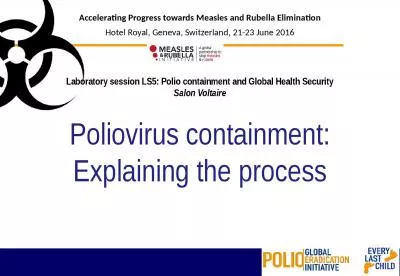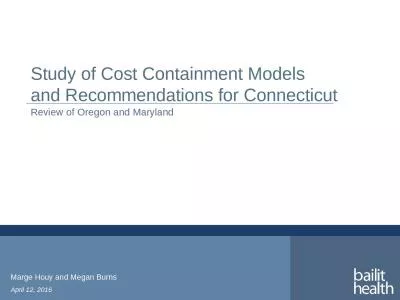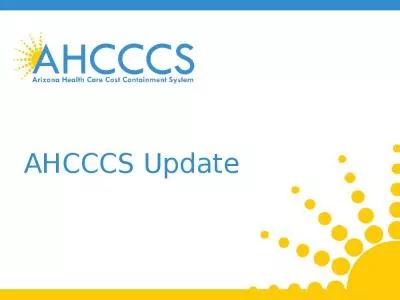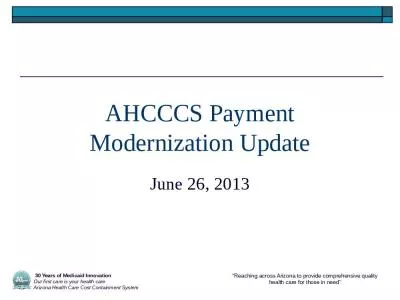PPT-Arizona Health Care Cost Containment System
Author : olivia-moreira | Published Date : 2018-12-18
DRGBased Inpatient Hospital Payment System DRG Workgroup December 6 2012 Meeting Agenda Page 2 Agenda Evaluation of APRDRGs Preliminary Baseline Model Policy Adjustors
Presentation Embed Code
Download Presentation
Download Presentation The PPT/PDF document "Arizona Health Care Cost Containment Sys..." is the property of its rightful owner. Permission is granted to download and print the materials on this website for personal, non-commercial use only, and to display it on your personal computer provided you do not modify the materials and that you retain all copyright notices contained in the materials. By downloading content from our website, you accept the terms of this agreement.
Arizona Health Care Cost Containment System: Transcript
Download Rules Of Document
"Arizona Health Care Cost Containment System"The content belongs to its owner. You may download and print it for personal use, without modification, and keep all copyright notices. By downloading, you agree to these terms.
Related Documents

